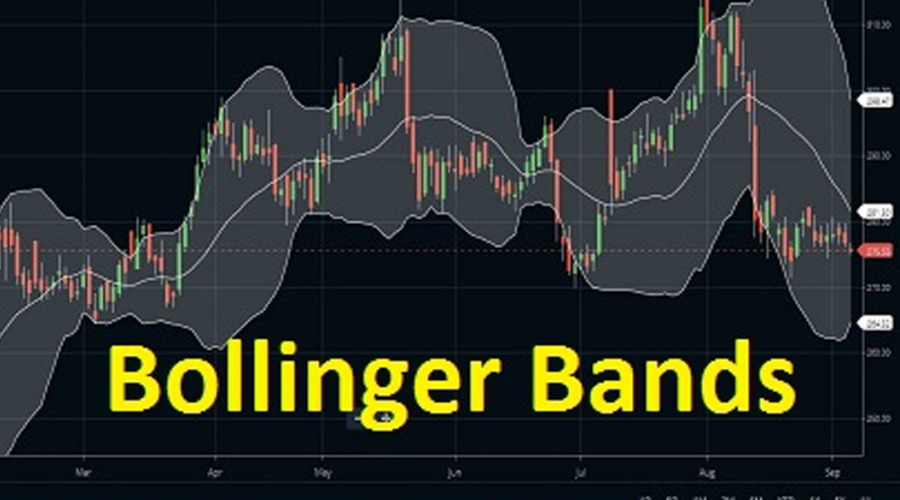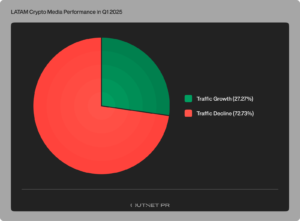
Bollinger Bands Strategy for Cryptocurrency Markets
In the fast-paced world of cryptocurrencies, traders are always on the lookout for reliable indicators to assist them in making profitable trades. Bollinger Bands, developed by John Bollinger, have emerged as a popular technical analysis tool due to their ability to provide valuable insights into market trends and volatility.
Understanding Bollinger Bands
What are Bollinger Bands?
Bollinger Bands are a type of technical indicator that consists of three lines plotted on a price chart. The middle line represents the simple moving average (SMA), while the upper and lower lines represent the standard deviations from the SMA. These bands dynamically adjust themselves based on market volatility.
How do Bollinger Bands work?
Bollinger Bands provide traders with a visual representation of price volatility. When the market is less volatile, the bands contract, and during periods of high volatility, the bands expand. Traders often use Bollinger Bands to identify potential entry and exit points, as well as to determine whether a cryptocurrency is overbought or oversold.
Benefits of using Bollinger Bands in cryptocurrency trading
- Volatility Identification: Bollinger Bands are effective in identifying periods of high and low volatility in cryptocurrency markets. The bands dynamically adjust based on market conditions, expanding during volatile periods and contracting during stable periods. By visually representing volatility, Bollinger Bands help traders anticipate potential price movements.
- Trend Reversal Detection: Bollinger Bands can assist in detecting trend reversals in cryptocurrency markets. When the price approaches or touches the upper or lower band, it may signal a potential reversal in the current trend. This can help traders make timely decisions to enter or exit positions and capture profits from trend changes.
- Overbought and Oversold Conditions: Bollinger Bands provide insights into overbought and oversold conditions of cryptocurrencies. When the price touches or crosses the upper band, it suggests that the cryptocurrency may be overbought, indicating a potential price correction. Conversely, when the price touches or crosses the lower band, it suggests that the cryptocurrency may be oversold, signaling a potential buying opportunity.
- Confirmation of Breakouts: Bollinger Bands can be utilized to confirm breakouts in cryptocurrency markets. Breakouts occur when the price breaks through the upper or lower band, indicating a significant move in one direction. By combining Bollinger Bands with other indicators or chart patterns, traders can validate breakouts and make informed trading decisions.
- Flexible Strategy Development: Bollinger Bands offer traders flexibility in developing their trading strategies. The bands can be customized by adjusting the parameters, such as the period length and standard deviation, to suit the specific characteristics of different cryptocurrencies. Traders can experiment with various strategies, including using Bollinger Bands in combination with other indicators, to find an approach that suits their trading style and preferences.
Strategies for using Bollinger Bands in cryptocurrency markets
- Bollinger Squeeze Strategy: The Bollinger Squeeze strategy involves identifying periods of low volatility, known as the squeeze. During a squeeze, the bands contract, indicating a potential upcoming price breakout. Traders can wait for the bands to narrow and the price to consolidate within the bands. Once the price breaks out of the bands, it can be seen as a signal to enter a trade in the direction of the breakout.
- Bollinger Band Expansion Strategy: The Bollinger Band expansion strategy focuses on identifying periods of high volatility. When the bands start to expand, it suggests an increase in market volatility. Traders can look for potential trading opportunities when the price moves away from the bands. For example, if the price reaches the upper band during an expansion, it may indicate an overbought condition, signaling a potential price reversal or correction.
- Bollinger Band Bounce Strategy: The Bollinger Band bounce strategy involves trading based on price movements within the bands. Traders can identify potential support and resistance levels by observing how the price interacts with the bands. When the price approaches the lower band, it may indicate a buying opportunity as the cryptocurrency may be oversold. Conversely, when the price approaches the upper band, it may suggest a selling opportunity as the cryptocurrency may be overbought.
- Bollinger Band Breakout Strategy: The Bollinger Band breakout strategy focuses on trading breakouts outside of the bands. Traders can wait for the price to break above the upper band or below the lower band, indicating a significant move. This breakout can be seen as a signal to enter a trade in the direction of the breakout. It is important to wait for confirmation signals, such as increased volume or candlestick patterns, to validate the breakout.
- Combining Bollinger Bands with Other Indicators: Traders can enhance their trading strategies by combining Bollinger Bands with other technical indicators. For example, they can use oscillators like the relative strength index (RSI) or the stochastic oscillator to identify overbought or oversold conditions within the bands. Additionally, combining Bollinger Bands with moving averages can provide further confirmation of trend reversals or price breakouts.
It is essential for traders to practice and backtest these strategies using historical data before implementing them in real-time trading. Every cryptocurrency market behaves differently, so it is crucial to adapt and adjust the strategies to suit the specific characteristics of the cryptocurrencies being traded.
Common Mistakes to Avoid
Here are some common mistakes to avoid when using Bollinger Bands:
- Relying Solely on Bollinger Bands: One of the most common mistakes is relying solely on Bollinger Bands without considering other indicators or conducting fundamental analysis. Bollinger Bands should be used as part of a comprehensive trading strategy that incorporates multiple factors. It’s important to validate signals from Bollinger Bands with other indicators or chart patterns to increase the accuracy of trading decisions.
- Ignoring Market Context: Traders should consider the overall market context when using Bollinger Bands. It’s crucial to analyze the broader market trends, news events, and sentiment alongside the signals provided by Bollinger Bands. Ignoring the market context can lead to false signals or missed opportunities.
- Using Default Settings Blindly: Bollinger Bands have default settings, but these may not be suitable for all cryptocurrencies or trading timeframes. Traders should adapt and adjust the parameters of Bollinger Bands based on the volatility and characteristics of the specific cryptocurrency being traded. Experimenting with different settings and conducting backtesting can help determine the optimal parameters for a given cryptocurrency.
- Overlooking Risk Management: Risk management is a critical aspect of trading that should not be overlooked. Traders should set appropriate stop-loss orders to limit potential losses and adhere to proper position sizing. Bollinger Bands can assist in identifying entry and exit points, but risk management strategies should be implemented to protect capital and manage potential risks.
Tips for Successful Implementation
To maximize the effectiveness of the Bollinger Bands strategy in cryptocurrency markets, consider the following tips:
- Combine Bollinger Bands with other indicators such as moving averages or relative strength index (RSI) for confirmation.
- Regularly review and adjust the parameters of the Bollinger Bands to suit the volatility of the specific cryptocurrency being traded.
- Practice risk management by setting stop-loss orders and adhering to proper position sizing.
Case Studies
Example 1: Bitcoin

Let’s examine how Bollinger Bands can be applied to Bitcoin trading. By analyzing historical price data and observing Bollinger Band squeezes, traders can identify potential breakouts or reversals. Combining Bollinger Bands with other technical indicators like volume can provide further confirmation.
Example 2: Ethereum
Ethereum, another popular cryptocurrency, can also benefit from the Bollinger Bands strategy. Traders can use Bollinger Band contractions as signals for potential explosive moves in price. Additionally, watching for price breakouts from the upper or lower band can indicate the start of a new trend.
Conclusion
The Bollinger Bands strategy offers traders a valuable tool for analyzing cryptocurrency markets. By understanding how Bollinger Bands work and implementing appropriate strategies, traders can enhance their decision-making process and increase their chances of success. However, it’s important to remember that no strategy guarantees profits, and prudent risk management should always be practiced.
Frequently Asked Questions (FAQs)
How do I interpret Bollinger Bands?
Bollinger Bands can be interpreted by observing price movements in relation to the bands. When the price approaches the upper band, it may indicate an overbought condition, while approaching the lower band may suggest an oversold condition. Traders should also consider other indicators and chart patterns for confirmation.
Can Bollinger Bands be used for short-term trading?
Yes, Bollinger Bands can be used for short-term trading. Traders can adjust the parameters of the bands to suit their preferred timeframes. Short-term traders may focus on smaller price movements within the bands, while long-term traders may consider wider price ranges.
Are Bollinger Bands suitable for all cryptocurrencies?
Bollinger Bands can be applied to various cryptocurrencies, but it’s important to consider the specific characteristics and volatility of each asset. Some cryptocurrencies may exhibit different price patterns or react differently to Bollinger Band signals. Traders should conduct thorough analysis and backtesting before relying solely on Bollinger Bands.
What other technical indicators can complement Bollinger Bands?
Bollinger Bands can be complemented by other technical indicators such as the relative strength index (RSI), moving averages, or volume indicators. These additional tools can provide confirmation signals or identify potential divergences, further strengthening trading decisions.
Can Bollinger Bands predict price movements with certainty?
Bollinger Bands are not designed to predict price movements with certainty. They are a tool that helps traders analyze volatility and identify potential opportunities. Traders should consider Bollinger Bands as part of a comprehensive trading strategy that incorporates multiple factors, including fundamental analysis and market sentiment.
I have worked in the cryptocurrency industry for over 5 years and have written numerous articles on the subject. I am well-versed in all aspects of cryptocurrencies and blockchain technology, and am an expert in the field.








